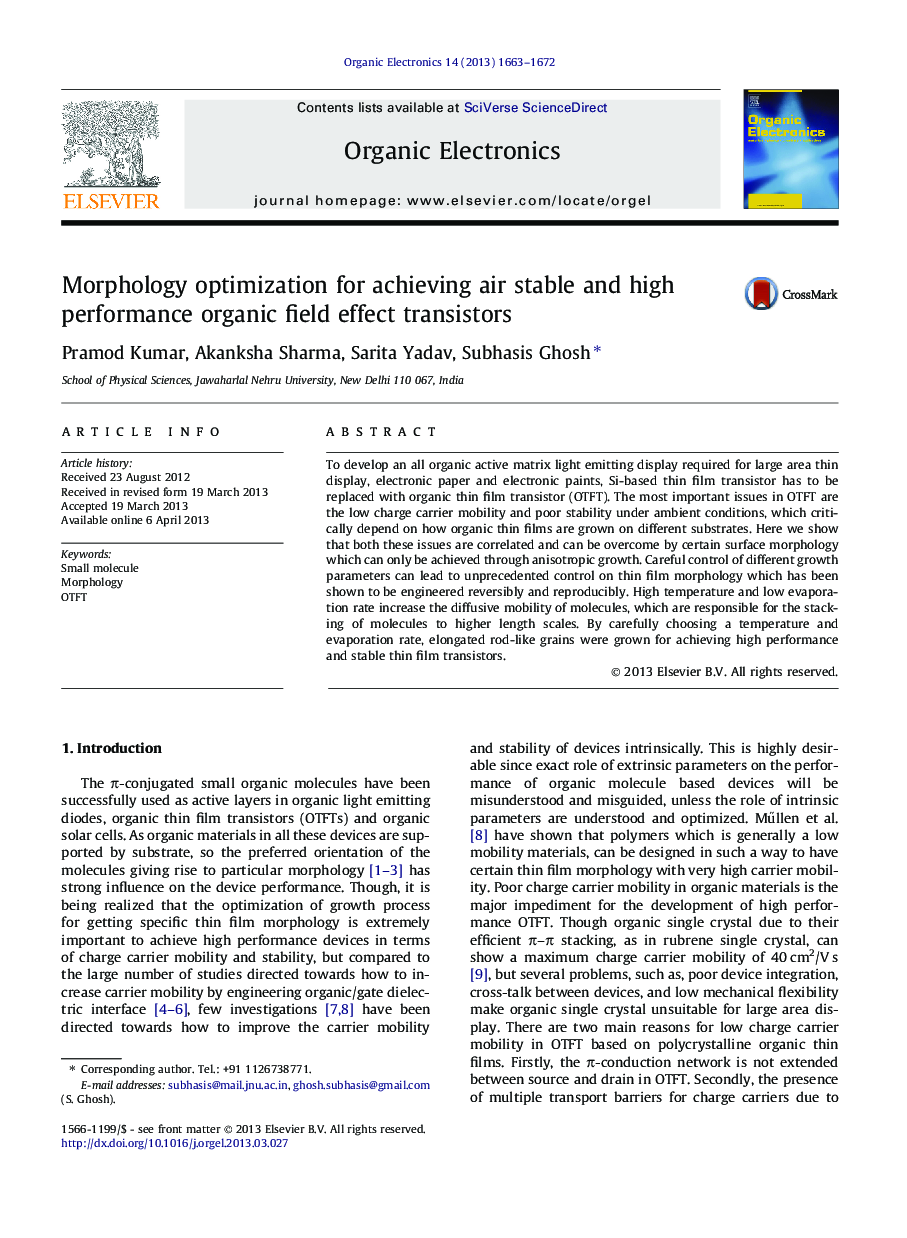| Article ID | Journal | Published Year | Pages | File Type |
|---|---|---|---|---|
| 1264532 | Organic Electronics | 2013 | 10 Pages |
•Morphology of organic thin film is controlled reversibly by varying two growth parameters independently.•High performance OTFT has been achieved by overcoming the main bottleneck due to grain boundaries.•Correlations between anisotropic growth and improved stability of OTFT have been demonstrated.•Correlations between thin film morphology and device performance have been demonstrated by varying growth parameters.
To develop an all organic active matrix light emitting display required for large area thin display, electronic paper and electronic paints, Si-based thin film transistor has to be replaced with organic thin film transistor (OTFT). The most important issues in OTFT are the low charge carrier mobility and poor stability under ambient conditions, which critically depend on how organic thin films are grown on different substrates. Here we show that both these issues are correlated and can be overcome by certain surface morphology which can only be achieved through anisotropic growth. Careful control of different growth parameters can lead to unprecedented control on thin film morphology which has been shown to be engineered reversibly and reproducibly. High temperature and low evaporation rate increase the diffusive mobility of molecules, which are responsible for the stacking of molecules to higher length scales. By carefully choosing a temperature and evaporation rate, elongated rod-like grains were grown for achieving high performance and stable thin film transistors.
Graphical abstractFigure optionsDownload full-size imageDownload as PowerPoint slide
